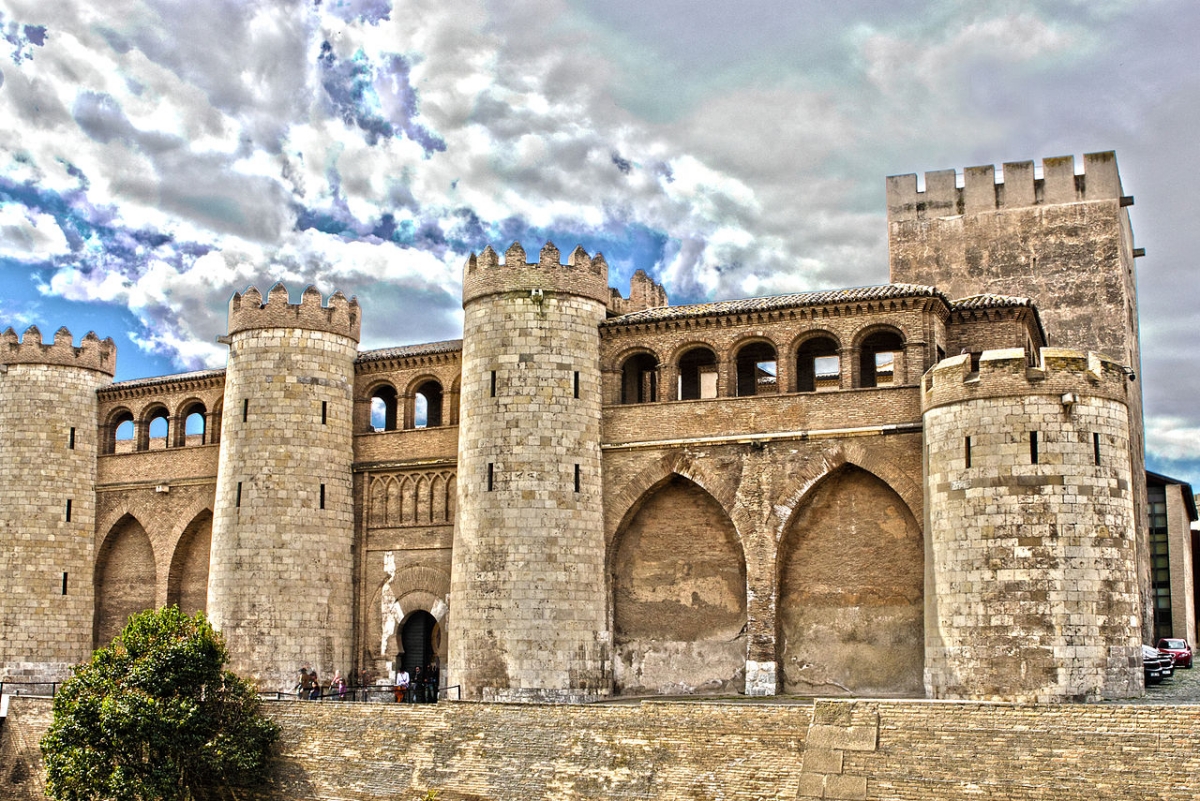
Image - Wikimedia / David Caponera
Spain It has many old castles, forts and palaces and some of them date back to the time of Muslim rule over part of the country. It is the case of this beautiful palace that you see in the image: the Palace of the Aljafería.
It's in ZaragozaAn ancient city there are, and it used to be the residence of the Taifa kings in times of the greatest splendor and apogee of their period of government. Let's get to know the Palacio de la Alegría today, as it used to be called.
Palace of the Aljafería
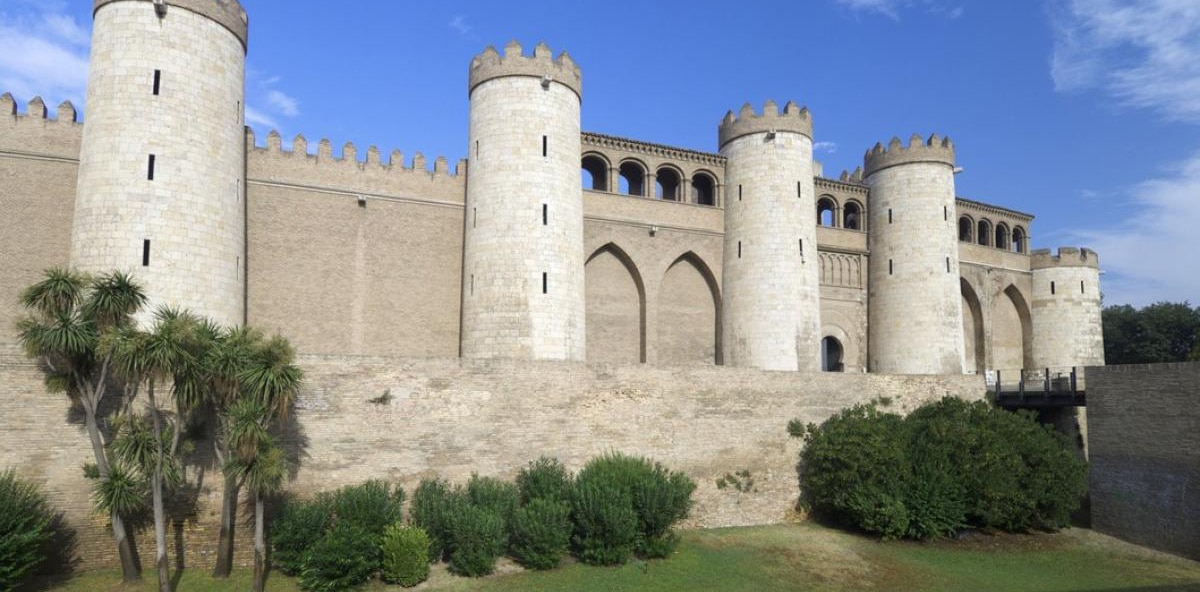
Its construction was ordered by the second king of the Banu Hud dynasty, Al-Muqtadir, in the second half of the eleventh century. He baptized him Joy Palace and it became a pleasure palace, still fortified as it is and how it is still preserved to the wonder of our eyes.
The palace has passed the passage of time with great honor and thus, since its birth as hudí islamic fortress, it happened to be medieval Mudejar palace, Catholic palace, a jail for the fearsome Inquisition, military barracks later and seat of the Cortes of Aragon. Obviously, each function has left its mark on the building as it has had modifications, extensions, destructions and restorations as well.
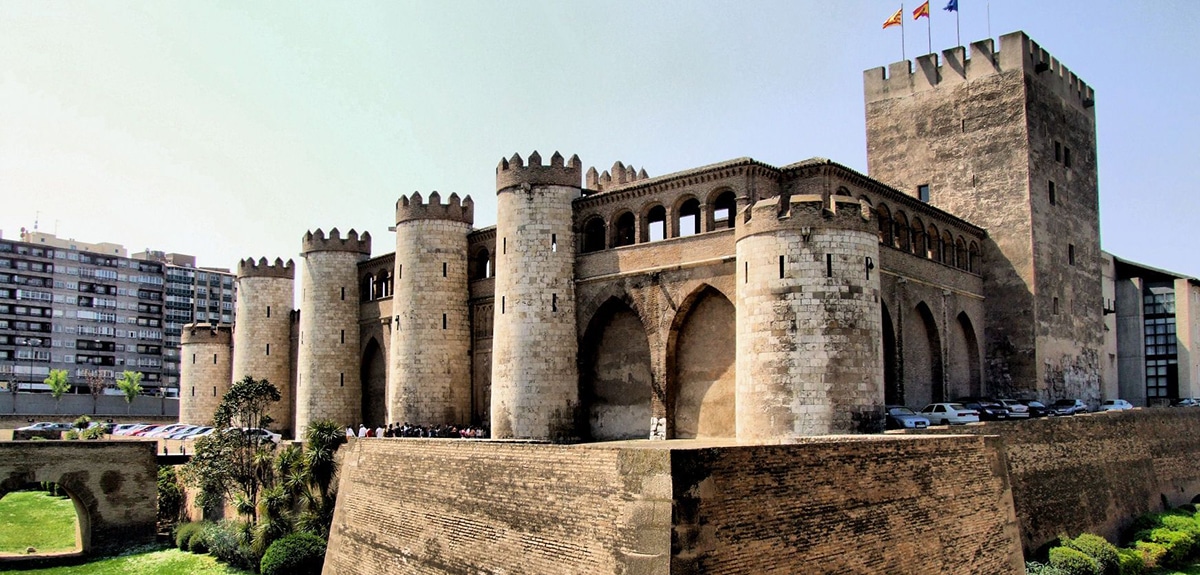
Thus, the islamic palace It is the one that was built in the XNUMXth century: a rectangular walled enclosure with huge and semicircular towers with a beautiful Torre del Trouvador. Between two towers there is still the entrance door shaped like a horseshoe arch. The palace has a garden, later called the Patio de Santa Isabel, with porticoes and rooms at both ends. There is also a mosque and a simple and small octagonal oratory.
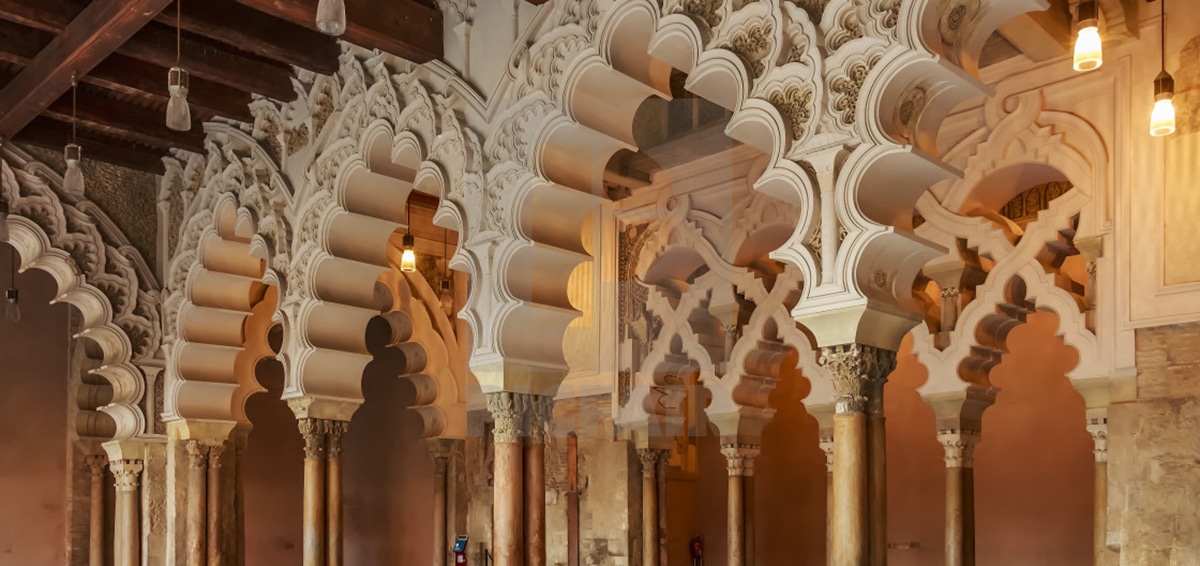
The later Mudejar palace It appears from the hand of the reconquest by Alfonso I the Battler in 1118. It was the palace of the Aragonese Catholic kings and some internal changes and extensions are owed to them. The Church of San Martín, the bedroom of Santa Isabel, the arches of the patio and the rooms dedicated to Pedro IV appear, which have beautiful alfarjes.
Around 1492 on the Muslim factory the Palace of the Catholic Monarchs. This building has as outstanding features many rooms, those of the Lost Steps, a huge and beautiful Throne Room with a golden and polychrome wooden ceiling, and a wide staircase. Around a hundred years later, the Aljafería palace became a fort and an important citadel, already more defensive in nature.
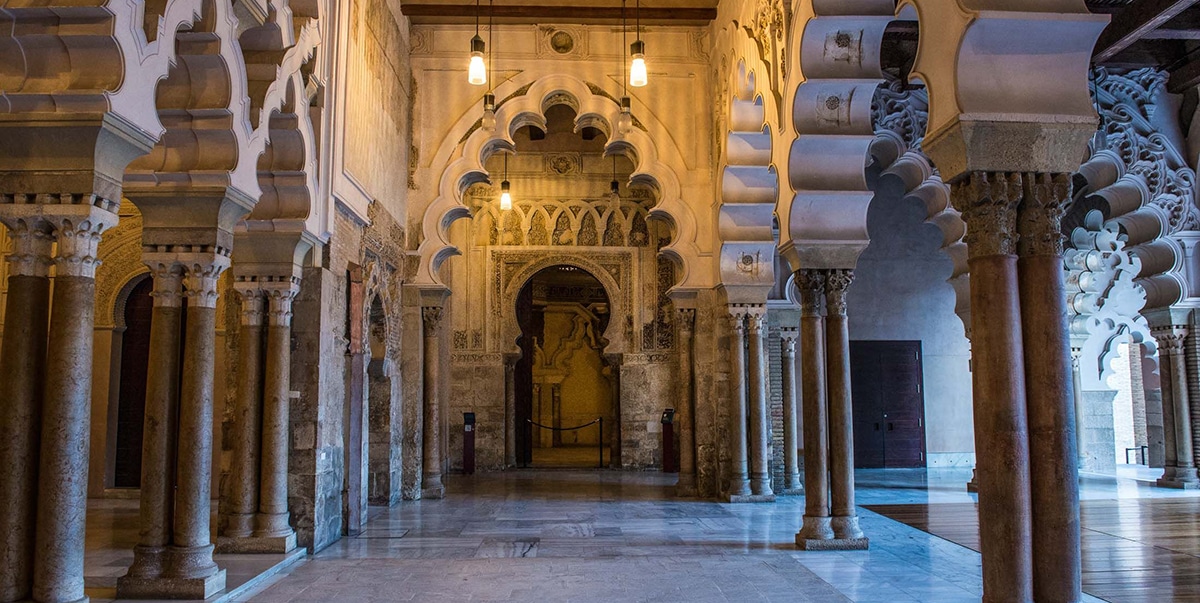
At that time King Felipe II reigned, and the building gained an outer wall with pentagon-shaped bastions at each corner and a moat all around with several drawbridges. As we can see, it never stopped growing and changing and it continued in the times of Carlos III and Isabel II, the latter endowing it with neo-Gothic towers.
Currently and since 1987 the Aljafería Palace has been the seat of the Cortes de Aragón and of course, it is open to visits. So what should we visit? Note: the Patio de Santa Isabela, the Throne Room, the Mosque, the Church of San Martín, the Mudejar palace of Pedro IV and the Torre del Trovador which is one of the oldest constructions in the building.
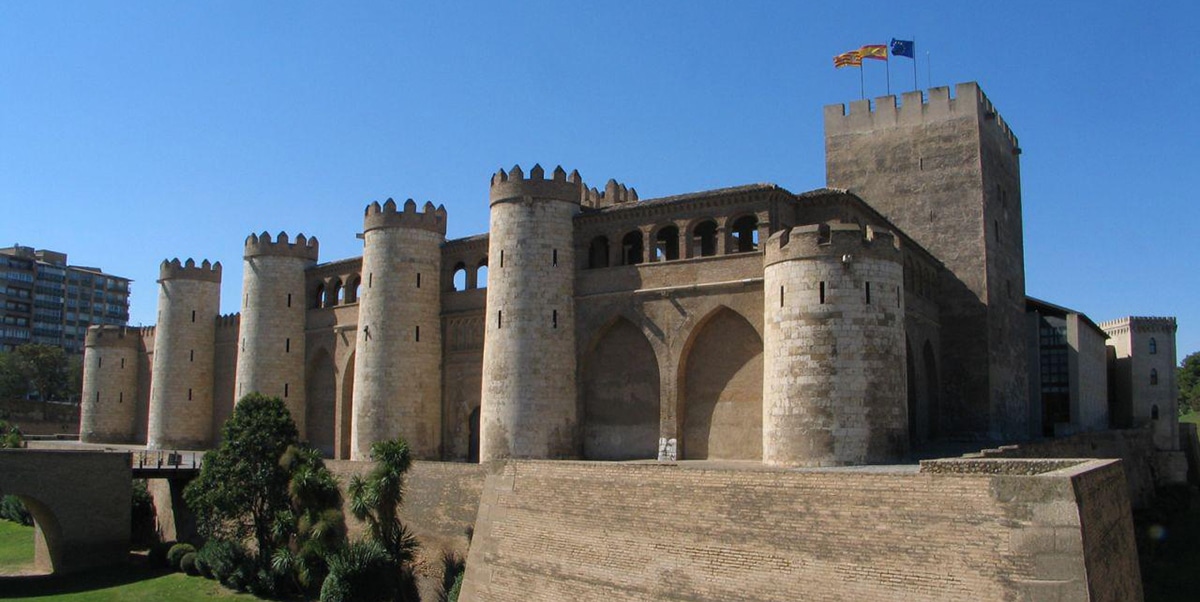
La Troubadour Tower it is named after a literary work by Antonio García Gutierrez from 1836, later turned into an opera by Giuseppe Verdi. Is a five story square defense tower built at the end of the XNUMXth century. From the outside I do not know the internal division in so many floors and it seems solid. You enter through a small door that was accessed by a portable ladder and naturally, it had military, lookout and defense functions.
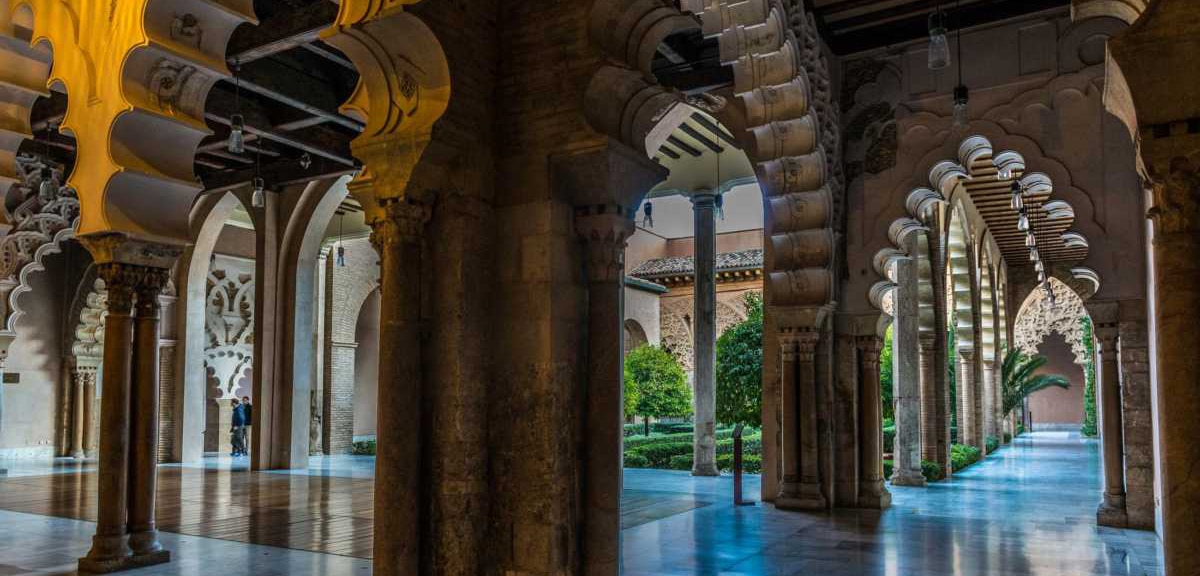
This tower is surrounded by a moat and it was the Banu-Hud who later integrated it into the castle. The Christians turned it into a Tower of Homage and the Inquisition into a dungeon. Then we have the taifal palace, in charge of the second king of the dynasty and the one who baptized it as the palace of joy, a building with red and blue and gold decorations, white marble and a lot of beauty.
Many of these decorations have been lost, plasterwork, alabaster baseboards, marble floors ... Something has been left in the museums and it is what allows us to imagine its original magnificence. For example, what has remained of the Golden Room allows us to know that its ceilings reproduced the sky and the cosmos, it had an access through a canvas with three openings, it had marble columns with Islamic alabaster capitals and many, many colors.
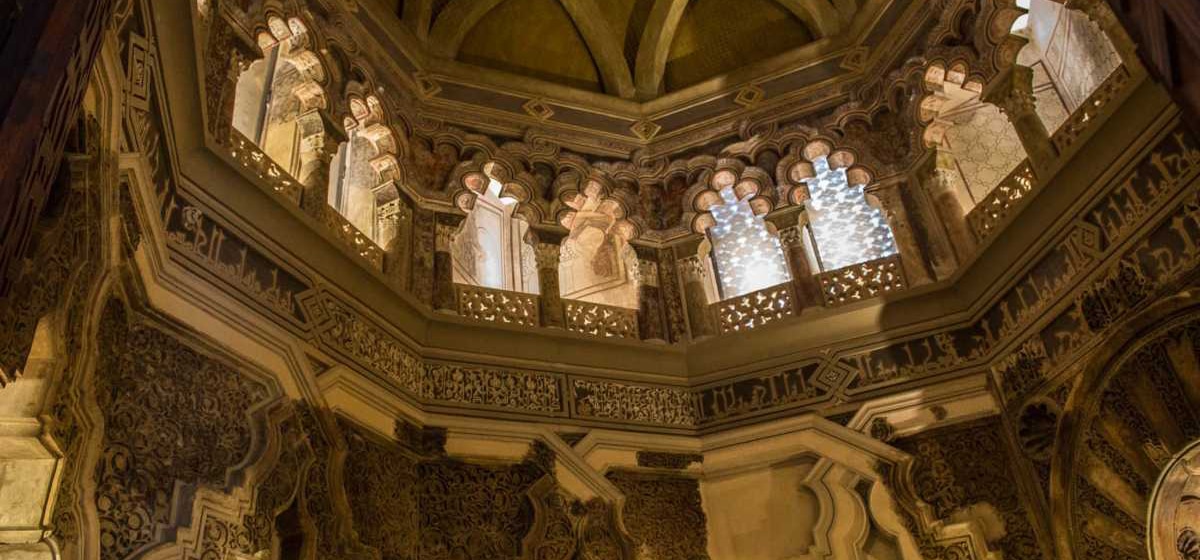
From the original layout the mosque has remained, a small one, a more private oratory that was used by the king and that contains, towards Mecca, the niche of the mihrab. The famous courtyard of Santa Isabel unified the entire palace and many of the rooms looked out over it. The original southern pool has been left and it has been restored in general lines with orange trees and flowers and marble plates on the floors.
What has not undergone many modifications is the palace of Pedro IV the Ceremonious, with the Church of San Martín, an old Gothic-Mudejar factory. It has two naves with simple ribbed vaults decorated with the shields of the Aragonese monarchy and a brick doorway from the times of Martín el Humano. It was Pedro IV who expanded the Muslim palace with more rooms and bedrooms and later, as we said, it was the Catholic Monarchs who built a new palace that is accessed through a monumental staircase.
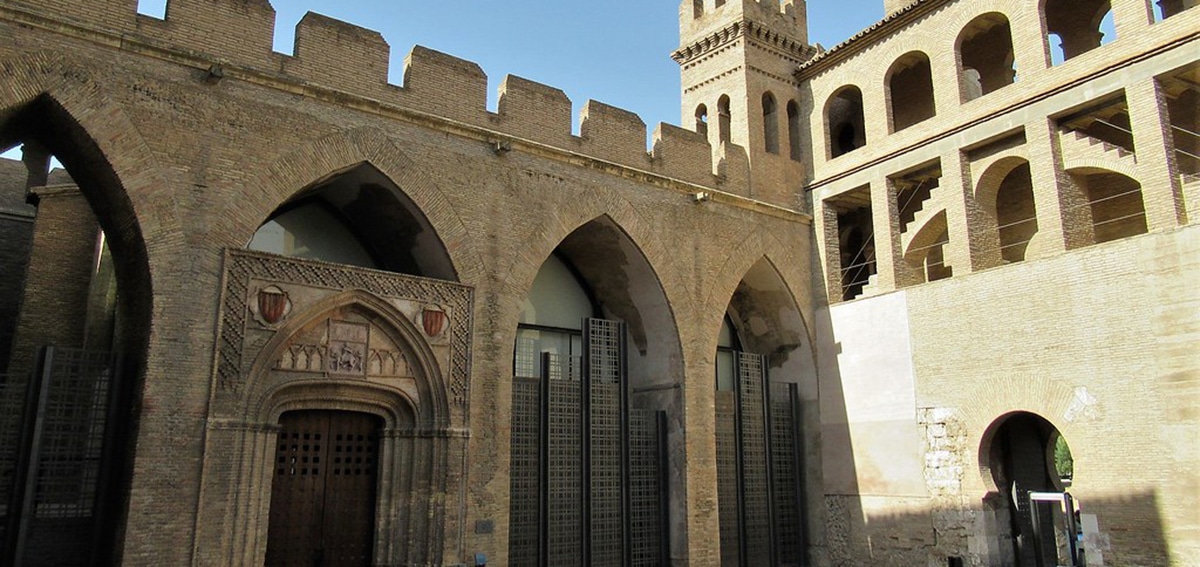
Finally, the Throne Room is the definition of the word sumptuous. It is huge, 20 meters long and eight meters wide, with thick beams, decorations in the shape of leaves and hanging pinecones, arches and a riser that surrounds the entire room with Gothic calligraphy and honors the figure of Fernando, King of Spain.
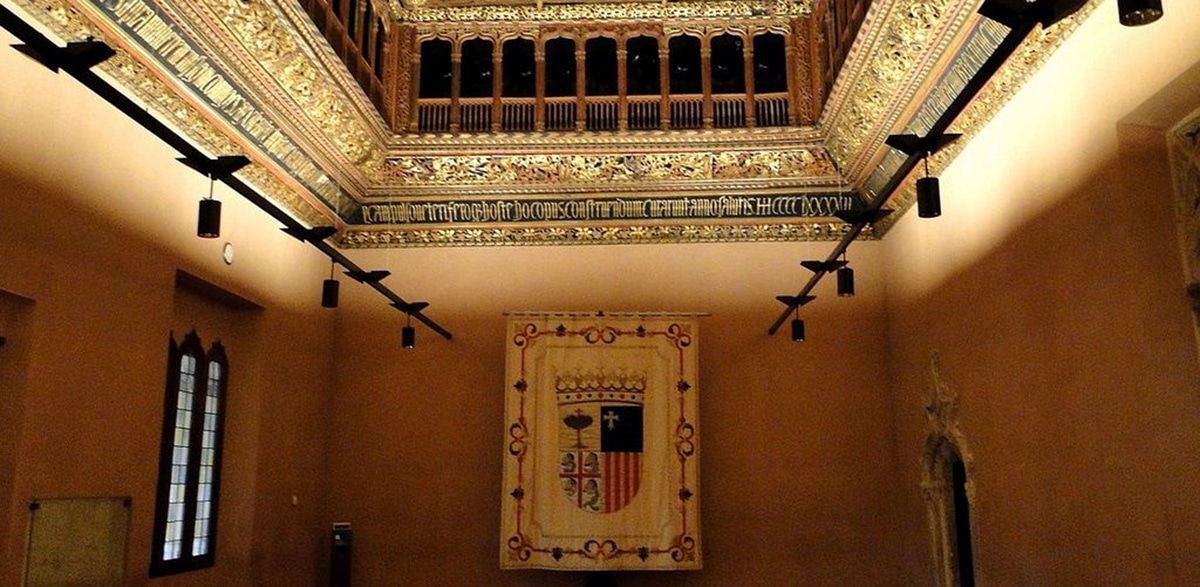
It must be borne in mind that the palace is very important as a physical testimony of what Hispanic Islamic architecture was in times of the Taifa in present-day Spain. This time was before the arrival of the Almoravids and since 1986 the architectural complex has been a World Heritage Site.
He estimates that going around the palace takes about three hours of walking. It is in the center of the city and you can get there by bus or on foot. I leave you practical information to make the visit:
- Hours: from April to October open in the morning, except Thursday and Friday, from 10 am to 2 pm. Guided tours are 10:30, 11:30 and 12:30. In the afternoon, except on Thursdays, from 4:30 to 8 pm, with guided tours at 4:30, 5:30 and 6:30. From November to March in the morning, except Thursday and Friday, from 10 am to 2 pm with guided tours at the same times and in the afternoon, except on Thursdays, from 4:30 to 6:30 pm. The palace is closed on Sunday afternoons.
- During January, July and August the palace is open every day, but closes on December 25 and January 1.
- General admission costs 5 euros.